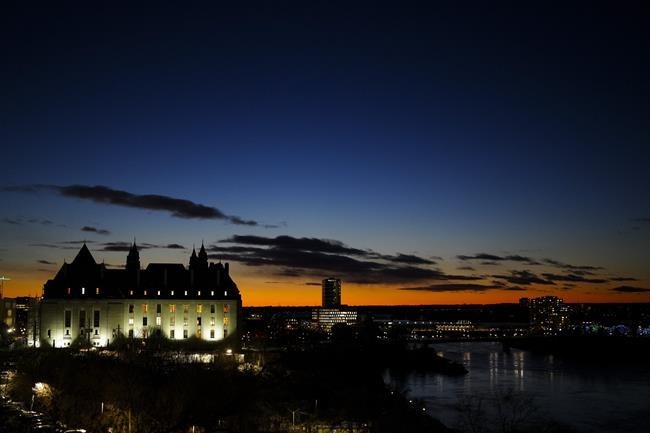OTTAWA — An Alberta First Nation ended up with less land than it should have received under a treaty made with the Crown well over a century ago, the Supreme Court of Canada has ruled.Â
In a 7-0 decision Friday, the top court declared that the Blood Tribe was entitled to more than 420 square kilometres of additional territory, saying the Crown "dishonourably breached" the treaty provisions.Â
Members of the Blood Tribe near Lethbridge, Alta., had long argued that Canada did not fulfil a promise made in 1877 to set aside a reserve with an area of one square mile for each family of five people.Â
In its decision, the Supreme Court noted the Crown recently acknowledged its breach of the land entitlement commitment.Â
However, the court characterized the admission as an eleventh-hour concession in a protracted legal dispute.Â
Under the treaty, the Blood Tribe was entitled to a reserve of 1,839 square kilometres in area, the court said.Â
In providing a reserve of just 1,418 square kilometres, Canada "dishonourably breached the treaty land entitlement provisions," Justice Michelle O'Bonsawin wrote on behalf of the court.Â
"Ultimately, a declaration is a discretionary remedy that must be considered within the unique context of the legal dispute at issue," she said.Â
A declaration the Blood Tribe was entitled to more land will serve an important role in "identifying the Crown's dishonourable conduct, assisting future reconciliation efforts and helping to restore the honour of the Crown," O'Bonsawin added.
The federal government is reviewing the decision and its effects, said Carolane Gratton, a spokesperson for Crown-Indigenous Relations and Northern Affairs Canada.
"Historically, the government of Canada broke its promises to Indigenous Peoples, as the court found was the case with the Blood Tribe," Gratton said in a statement.
She said the two parties "are actively in negotiations on resolving this past injustice."
The Blood Tribe said in a statement it will review its options to ensure the federal government lives up to the promises it made in the Blackfoot Treaty of 1877.
The Supreme Court judgment underscored the "sacred nature" of binding commitments made in treaties between the Crown and Indigenous Peoples.
"Treaty promises were intended to be honoured so long as the sun rises and river flows," O'Bonsawin wrote.
In 1877, Treaty No. 7 between the Crown and the Blackfoot Confederacy of First Nations established Blood Tribe Reserve No. 148, which is the largest reserve in Canada.
Ninety-four years later, a Blackfoot researcher concluded the reserve's size fell short of what was promised through the relevant formula, based on population statistics for the years 1879 to 1884.
Subsequent efforts to negotiate with the responsible federal minister of the day were unsuccessful.
In 1980, the Blood Tribe took its case to Federal Court, alleging breaches of the Crown's fiduciary duty, fraudulent concealment and negligence. It sought a declaration and damages for breach of contract arising from the Crown's failure to meet the land commitment.
However, many years passed before the court heard the matter.
The trial judge dismissed most of the claims but accepted that the size of the reserve, as calculated by the Crown, was too small.
The judge also found the remedies sought by the Blood Tribe were not barred by a six-year statute of limitation that would have taken effect by the late 1970s. The action could not have been pursued until enactment in 1982 of section 35(1) of the Constitution Act, which created a new cause of action for treaty breaches, the judge reasoned.
The Federal Court of Appeal disagreed, saying the entitlement claim was indeed barred by the time limitation and that the constitutional changes did not create new treaty rights.
In its decision Friday on the Blood Tribe's appeal, the Supreme Court agreed that the 1982 amendments did not usher in treaty rights, but rather entrenched the Crown's obligation to respect existing treating rights.
The high court also found the constitutional changes did not alter the limitation periods applicable to claims for breach of treaty rights. As a result, the Blood Tribe's land entitlement claim was indeed filed in Federal Court after the six-year limitation period.
However, the Supreme Court said it had "the authority to grant the judgment that the courts below should have ordered."
O'Bonsawin wrote that "declaratory relief is warranted given the longevity and magnitude of the Crown's dishonourable conduct towards the Blood Tribe."
"Declaratory relief in this context will promote reconciliation and help to restore the nation-to-nation relationship between the Blood Tribe and the Crown."
This report by The Canadian Press was first published April 12, 2024.Â
Jim Bronskill, The Canadian Press



